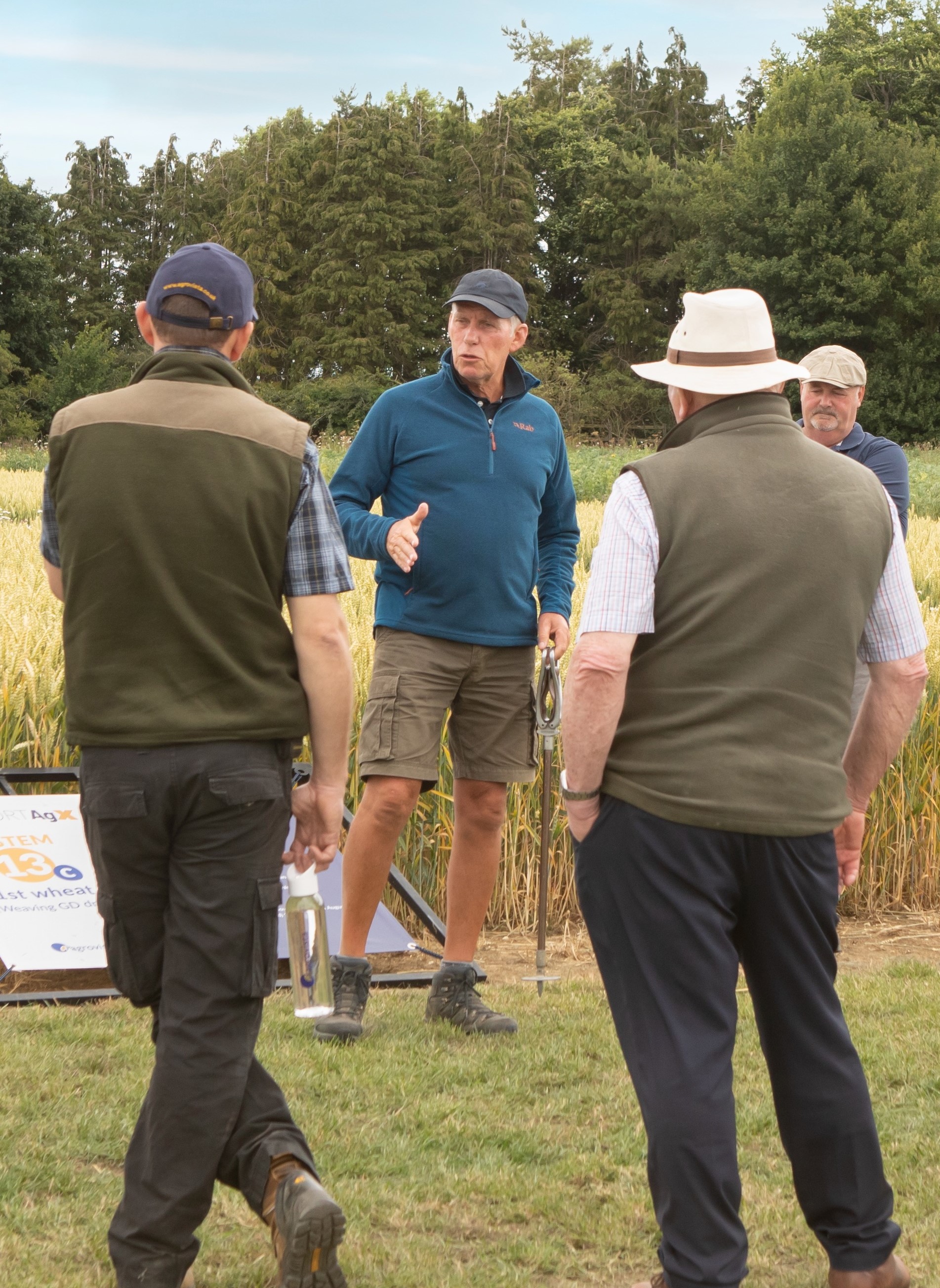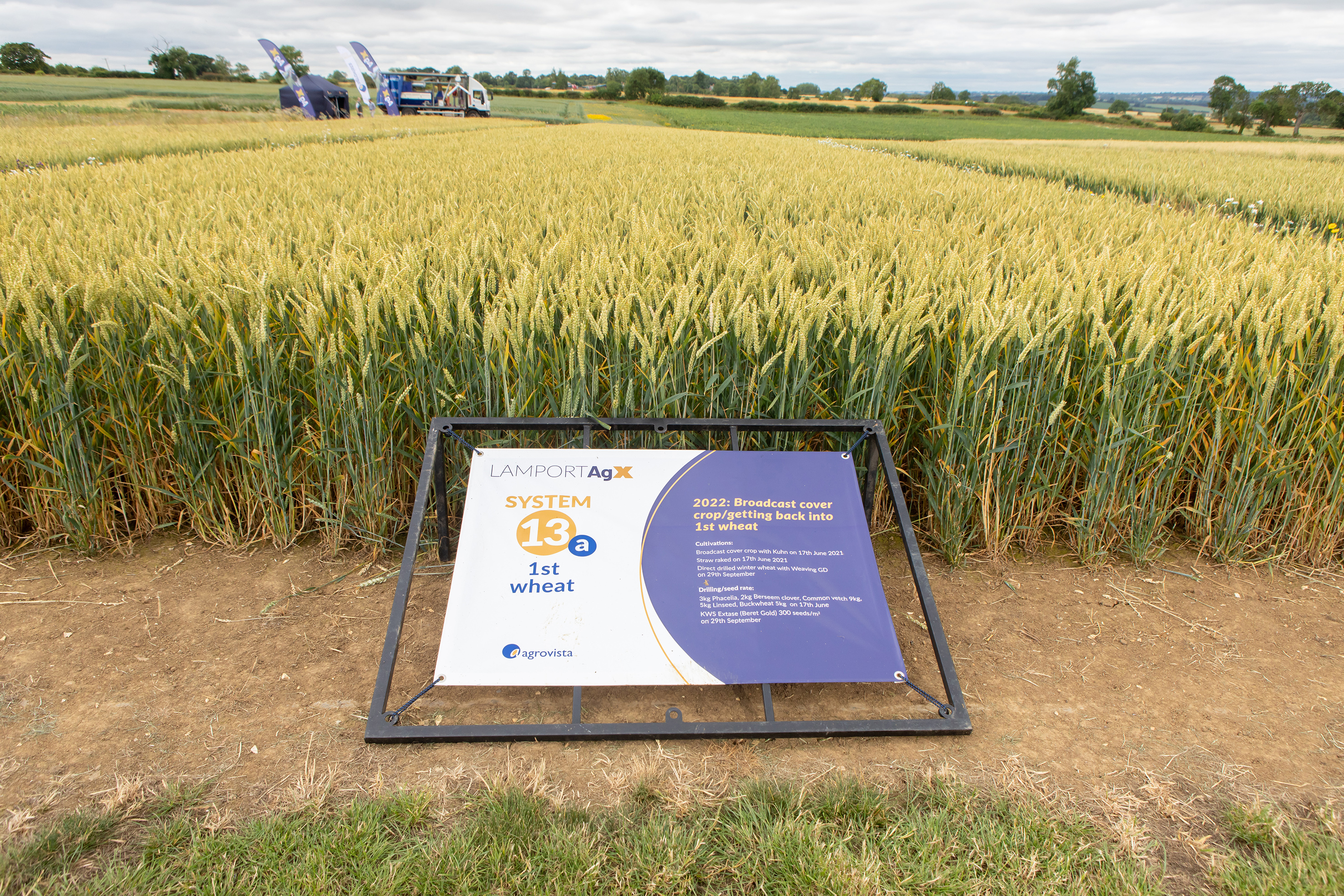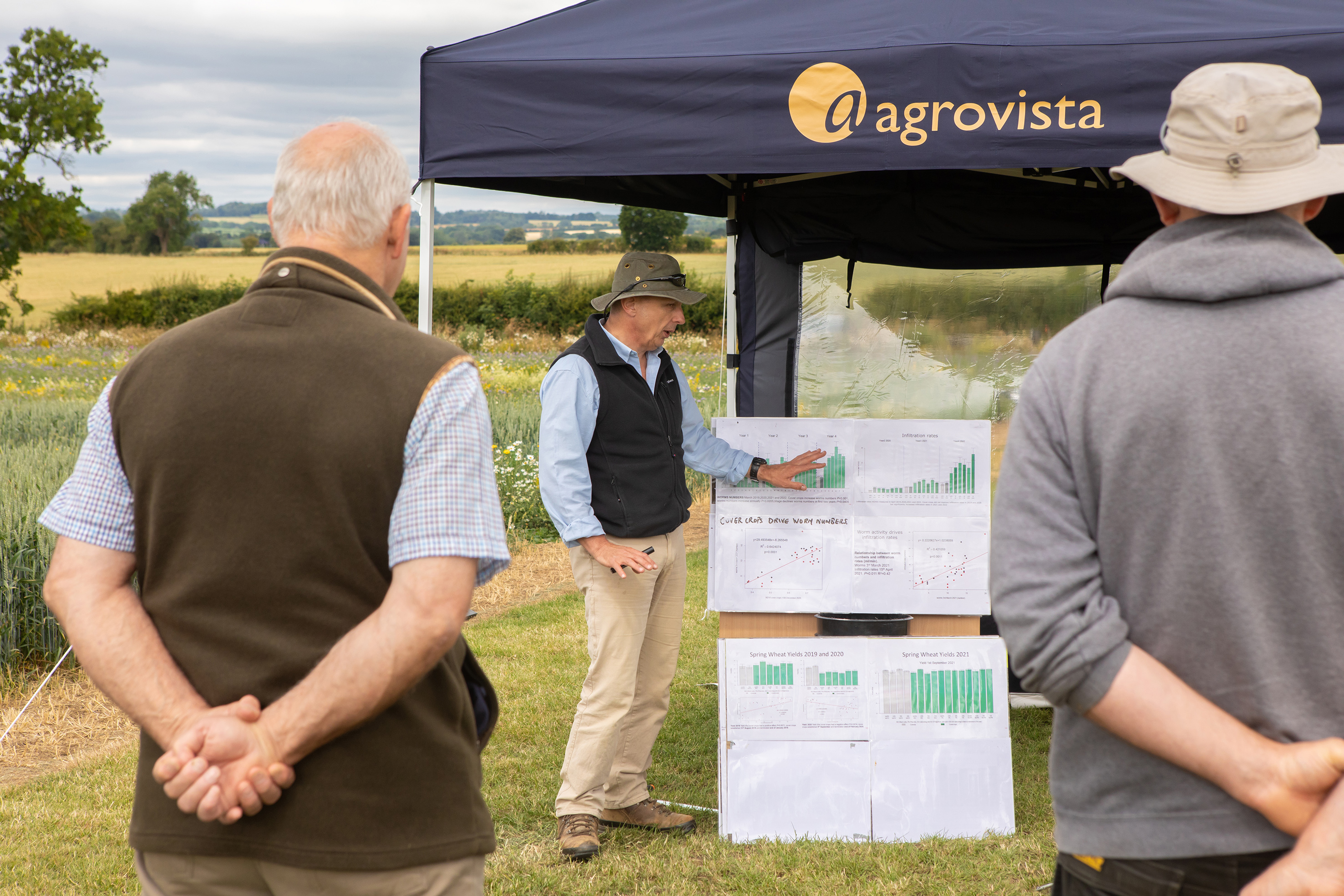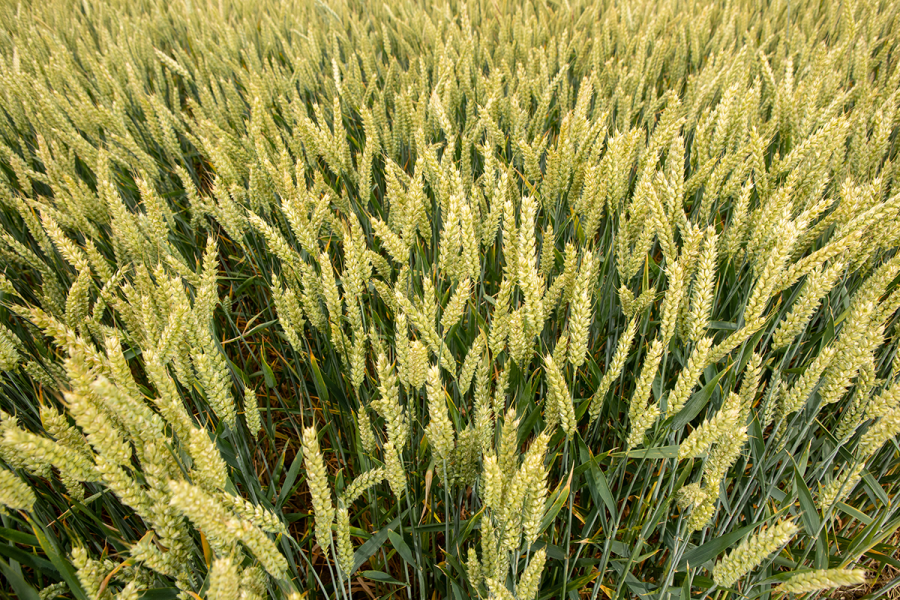Achieving high yielding first wheats has long been thought as the secret to profitable arable farming, but is it possible to reach those maximum yields without falling victim to weed challenges? CPM finds out more.
It’s criminal not to put a cover crop in
By Charlotte Cunningham
When thinking about how to achieve maximum production and profits from wheat, the advice would have traditionally been to drill into good conditions during the September sowing window.
However, with the rise of blackgrass and other arable weed issues, farmers have been forced down the path of delayed drilling – many moving into the October timing and some even going as late as early November to escape the worst of the weed pressures.
For many, the fear has perhaps been that delaying drilling compromises yield, but with blackgrass having reared its ugly head in such an aggressive way in recent years, potentially losing a little yield has been seen as the lesser of two evils.
So are the days of being able to profitably grow September wheat gone? This is a concept which Agrovista aims to explore at its Lamport AgX site in Northampton, which recently opened its gates to visitors to showcase the latest research and development.
Historically, the site has been plagued with blackgrass, and since the beginning trials have been focused on how to alleviate weed burdens, explains Mark Hemmant, technical manager at Agrovista. “We’ve got a long history at Lamport of talking about direct drilling, spring crops and autumn-sown cover crops, but this year we wanted to turn it on its head and think a bit differently. The end game for us and farmers is probably to grow as many profitable first wheats as possible, and preferably to get back to sowing in September without causing issues with blackgrass.”
As a result, this year the Lamport site features several September sown winter wheat plots where this has been achieved. So the question is, how have they got there and what are the steps needed to achieve this?
The first thing to note is that the success is based on a decade of work on weed control at the Lamport site, and that this has been fundamental in being able to grow September sown wheats again, explains Niall Atkinson, farming systems research and development adviser. “When I first saw the site 10 years ago it frightened the life out of me. I have never seen grassweeds growing like they did here.

Niall Atkinson says good weed control is fundamental prior to attempting to grow September sown wheat.
“Chemistry wasn’t working so we had to set about using cultural techniques. The site started off primarily very much about grassweed control, but it’s fair to say that has developed into so much more now.
“We’re looking far more at soil health interaction and cultivations, but we must never lose sight of the fact that grassweeds are always present and that’s got to remain one of our uppermost thoughts.”
The way the Lamport team has found to be most effective in tackling grassweeds is by using spring crops after a break crop. So prior to the September sown wheat going in, the three plots were in a cover crop mix followed by spring oats, and then cover crop followed by spring beans. The wheat was then direct drilled with KWS Extase on 28 September at a seed rate of 300 seeds/m2.
Herbicides have also played a role in the success of the crop, with all three plots receiving a full set of chemistry for blackgrass. Pre-emergence, they received Proclus (aclonifen) plus Liberator (flufenacet+ diflufenican) and Avadex (triallate), followed by full rate flufenacet early post-emergence.
But with resistance and efficacy of chemistry a continual concern, even the newest chemistry can’t be relied on where blackgrass numbers are high and as such, Niall stresses that herbicides can only give good results where the weed seedbank has already been reduced to a low enough level via other cultural methods. “Chemistry is the finer detail.”
Direct drilling can then help even further, by minimising the disturbance of potentially well-buried weeds, and the plots were drilled with three different types of drills: a John Deere 750a, a Weaving GD and an Aitchison tine drill. The differences between these drills will be analysed further in the coming months.

Prior to the September sown wheat going in, the three plots were in cover crop followed by spring oats, and then cover crop followed by spring beans.
So having now successfully established September sown winter wheat in the rotation, the question is, how do you keep them there? “The last thing we want to do is come back into the same field with a second winter wheat,” warns Niall. “We have got to bring in these diverse rotations, alternating cover crops and spring crops, before going back into winter crops.”
Agrovista aims to demonstrate this in upcoming work which will study three September sown wheat plots again – comparing wheat for just a year, two years of wheat and three years of consecutive wheat. “This will allow us to show growers what can happen, but we almost already know where we’re going to end up.”
They have, however, explored how to keep growing winter wheat. “If this is something you’re considering, you’ve got to first look at the previous cropping and here, we had grown cover crops followed by spring wheats for four years,” explains Niall. “We wanted to explore what would happen if we put winter wheat in after continual spring wheat. To be clear, we’re not advocating drilling in September here, and this plot was drilled on 14 October.”
Looking at the results, Niall says that while there have been some grassweeds present, it’s nothing that can’t be dealt with by using cover crops/spring wheat next season. “So what we’ll do is come back in with a cover crop this autumn, followed by spring wheat next spring, and then back into winter wheat the following autumn.
“From a financial point of view, without any shadow of a doubt, the clear leader in terms of gross margin is winter wheat, with yields of 11-12t/ha predicted. But our spring wheat after cover crops has consistently given us 7-8t/ha so, if this works, it could be quite a nice rotation going forward.
“It’s possible that we could perhaps break every three years and put spring beans in – we’ll see where it goes. It’s certainly better than the 5-6t/ha we get here with second wheats.
“As I’ve gone through the learning process, I think it’s criminal not to put a cover crop in. Not just for the weed control benefits, but think also about water infiltration, worm activity and soil life advantages they bring. They’ve enabled us to maintain yields in spring wheat of 7-8t/ha and kept grassweed infestations in single figures/m2. For £20-30/ha it’s worth doing.”
Getting more from soils

A long-term replicated research project has shown that cover crops are crucial for getting soil and plants to work together to put more energy into the soil, explains David Purdy.
David Purdy, PhD student, used the event to talk through the findings of a replicated research project looking at the impact of cultivations, compaction and cover crops on soil structure, organic matter, and microbiology.
This is the fourth year of work, and David says a huge amount of data has been collected – the challenge now is to unpick the findings and translate this into learnings for growers. “As a starting point, it’s fundamental to understand the power of photosynthesis – capturing carbon from the atmosphere, using energy from sun, water from soil and minerals from soil to create life. But our question was what it does to our soils, and beyond that, if we can make the biology of plants and soils work together.”
David has looked at the relationship between photosynthesis and living roots, considering the energy flow of carbon from the atmosphere. And so was born the theory of putting energy back into soils, which has involved the use of cover cropping to capture this energy, as well as the effects of different tillage methods on the cover crops themselves.
Headline results include that, starting from a low level four years ago, there has been significantly higher worm counts where cover crops are used. Increasing cover crop biomass has driven this change, adds David, and early establishment before the end of August has proven to increase biomass production.
Cover crops have also significantly increased infiltration rates measured in April between 2020-2022, which has largely been driven by the increasing worm activity. Cover crops were also found to create better soil structures than no disturbance/subsoiled systems alone.
In terms of the following crop, cover crops had a positive impact on yields too – though early termination is critical, warns David. What’s more, reduced blackgrass control was achieved where cover crops with greater biomass were produced.
While he hasn’t measured any change in organic matter over the past four years, he anticipates that this will come. “I think in 10 years’ time we’ll see this – it’s that kind of time frame you’ve got to think about with making improvements to soil.
“That relationship when you get two microbiomes coming together – the plant and the soil – has an extended benefit. Cover crops in particular are doing a lot of good for us – they’re bring a huge amount of biology into the soil and they’re structuring it like nothing else.”
This article was taken from the latest issue of CPM. For more articles like this, subscribe here.




